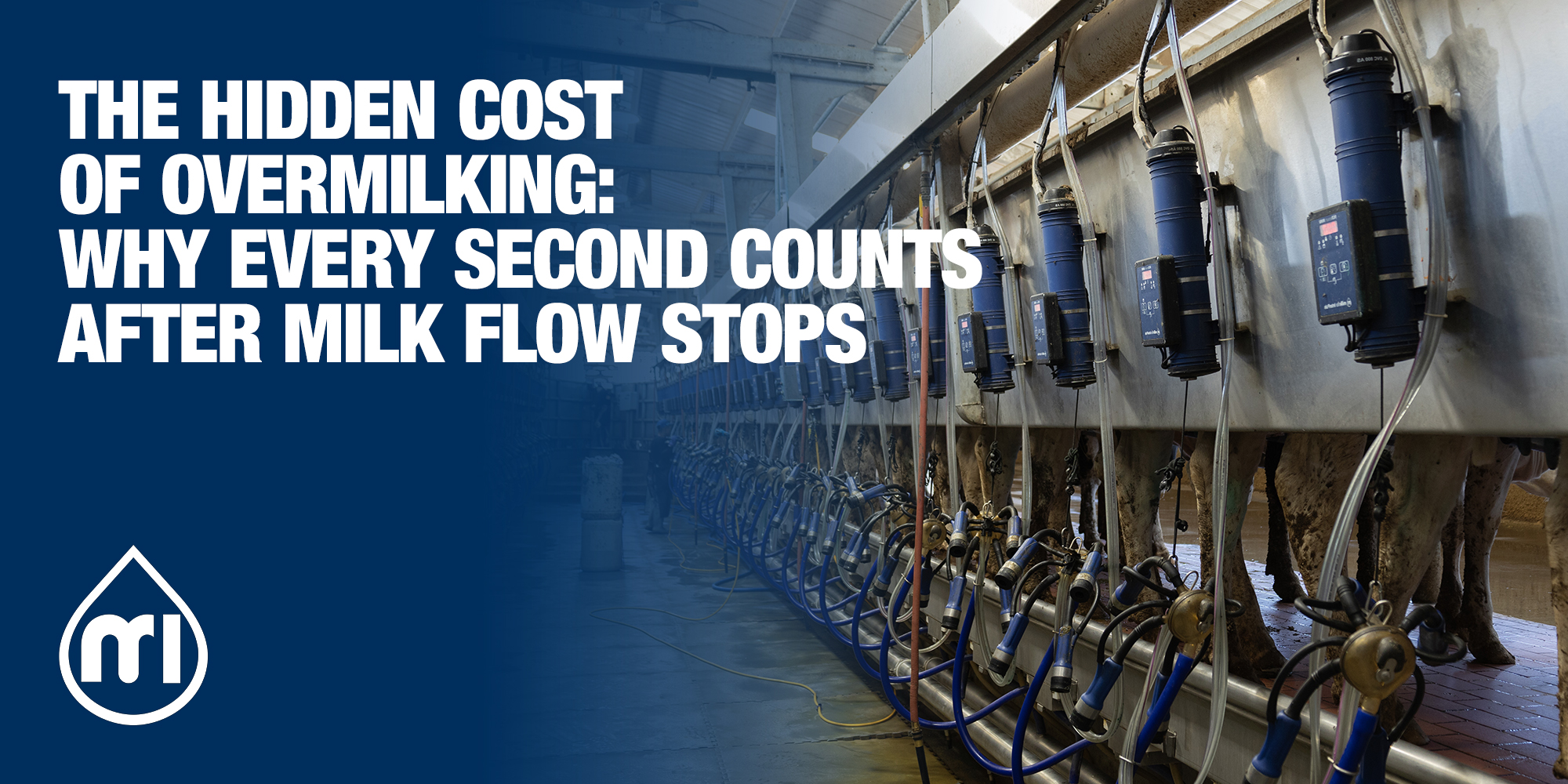
The hidden cost of overmilking: why every second counts after milk flow stops
Listen to this article!
In the fast-paced world of modern dairy farming, efficiency often takes precedence over precision. However, when it comes to milking practices, those extra seconds, or even minutes, that milking units remain attached after milk flow ceases can have profound consequences on udder health, milk quality, and ultimately, your bottom line.
The science behind the problem
Research consistently demonstrates that overmilking isn't just an inefficiency; it's a direct threat to teat tissue integrity. Studies published in the Journal of Dairy Science reveal that cows subjected to just three additional minutes of milking after flow cessation show a 35% increase in somatic cell count (SCC) and significantly higher mastitis prevalence.
The physiological mechanism is clear: once milk flow drops below optimal levels, vacuum pressure at the teat end rises dramatically. Within ~90 seconds after milk flow cessation, the average vacuum at the teat end rises to a level close to the system vacuum (e.g., ~42–44 kPa in low-line installations and 50–55 kPa in high-line), creating dangerous levels of congestion and tissue stress. This isn't merely uncomfortable for the cow; it's actively damaging delicate teat canal tissues.
The cascade of complications
When we examine overmilking through the lens of udder health, several interconnected problems emerge:
Tissue trauma and inflammation. Extended vacuum exposure causes micro-haemorrhages and epithelial damage at the teat end. This mechanical trauma triggers an inflammatory response that elevates SCC even in the absence of bacterial infection: what researchers term "aseptic" SCC elevation. The result is compromised milk quality that affects both immediate marketability and long-term herd health metrics.
Compromised natural defences. Overmilking jeopardizes the first defence mechanism of the teat. Oedema and hypoxia from prolonged vacuum exposure delay the natural closure of the teat canal after milking, leaving it vulnerable to bacterial invasion for extended periods. This "window of vulnerability" represents the difference between healthy udders and chronic mastitis problems.
The detachment dilemma. The problems compound when clusters are removed improperly. Manual detachment under vacuum, particularly common when operators are rushed or inadequately trained, creates additional trauma through shear forces. Worse, improper detachment can cause "impact infections" when residual milk droplets containing bacteria are forced into the open teat canal by sudden air immission.
Beyond individual cow impact
The effects of overmilking extend far beyond individual animal welfare. From an operational standpoint, systematic overmilking creates several management challenges:
Inconsistent milking routines: manual detachment leads to operator-dependent variations, making it difficult to maintain consistent milking protocols across different shifts and personnel.
Increased treatment costs: higher mastitis incidence translates directly to increased veterinary expenses, extended treatment periods, and milk withdrawal losses.
Chronic deterioration of teat condition: repeated episodes of overmilking lead to hyperkeratosis and thickening of the teat ends, gradually altering their anatomy and elasticity. Thickened, damaged tissue not only reduces animal comfort but, more importantly, causes permanent damage to the teat canal – the natural barrier protecting the udder from infections. When the canal does not close properly, it remains an open “gateway” for bacteria. This significantly increases the risk of recurrent infections and, in many cases, leads to chronic mastitis. Persistent inflammation results in reduced milk yield, poorer milk quality, higher treatment costs and – unfortunately – often necessitates culling the affected cow from the herd.
Parlor efficiency losses: ironically, attempting to "get the last drop" through extended milking often reduces overall parlour throughput while compromising milk quality.
At this point, the aftermath of overmilking is evident and with severe repercussions on herd health and farm profitability. To make sure you tackle it correctly and promptly, make sure to read the next Blog episode, developed in cooperation with our Milking Experts.
Sources
Journal of Dairy Science Vol. 101(8)
milkrite | InterPuls internal training materials
National Mastitis Council Guidelines
Teat condition in dairy cows: Assessment, effects, and importance Mein
Udder health and milking management Hamann – IDF Bulletin 371
